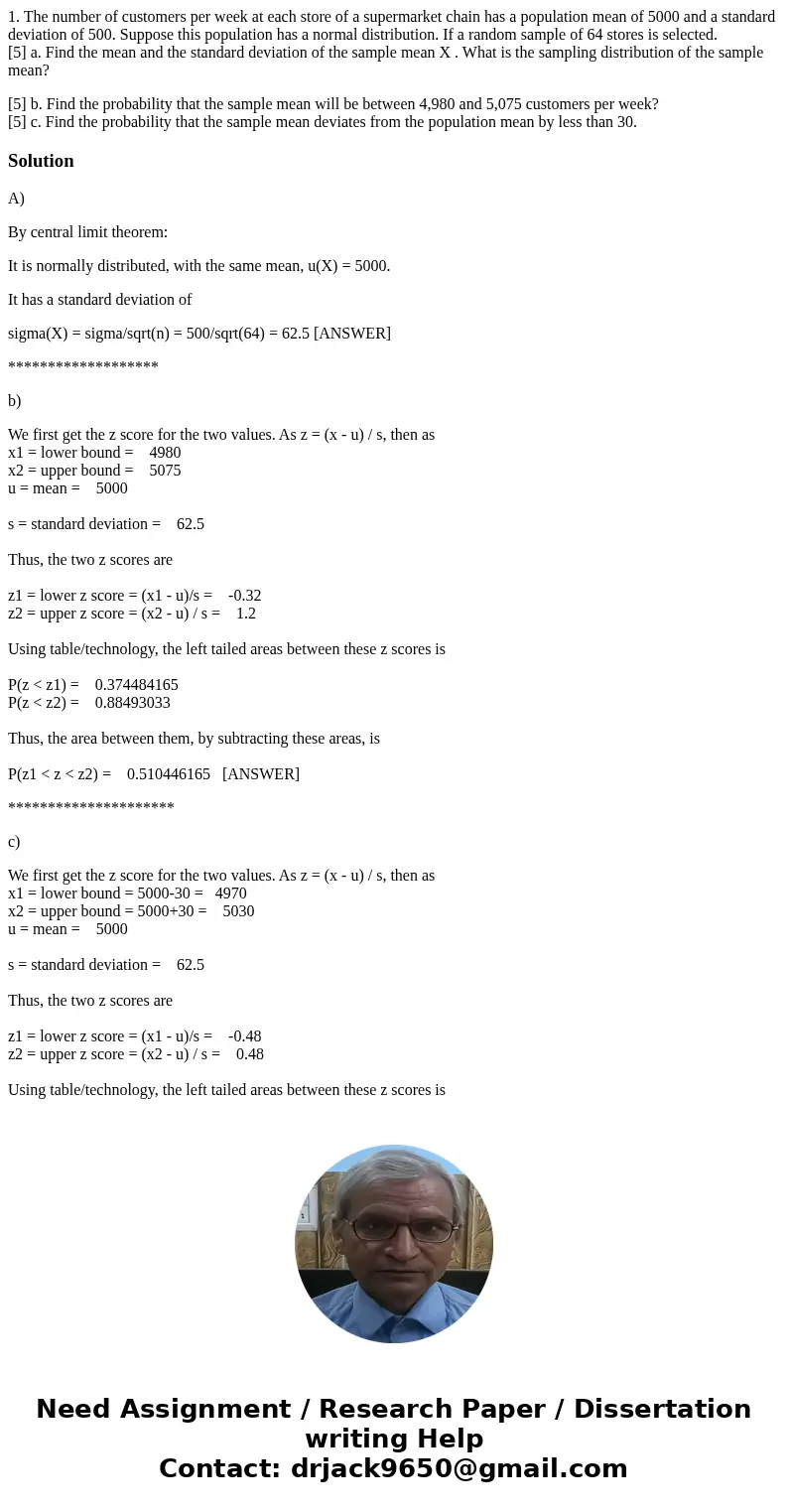1 The number of customers per week at each store of a superm
1. The number of customers per week at each store of a supermarket chain has a population mean of 5000 and a standard deviation of 500. Suppose this population has a normal distribution. If a random sample of 64 stores is selected.
[5] a. Find the mean and the standard deviation of the sample mean X . What is the sampling distribution of the sample mean?
[5] b. Find the probability that the sample mean will be between 4,980 and 5,075 customers per week?
[5] c. Find the probability that the sample mean deviates from the population mean by less than 30.
Solution
A)
By central limit theorem:
It is normally distributed, with the same mean, u(X) = 5000.
It has a standard deviation of
sigma(X) = sigma/sqrt(n) = 500/sqrt(64) = 62.5 [ANSWER]
*******************
b)
We first get the z score for the two values. As z = (x - u) / s, then as
x1 = lower bound = 4980
x2 = upper bound = 5075
u = mean = 5000
s = standard deviation = 62.5
Thus, the two z scores are
z1 = lower z score = (x1 - u)/s = -0.32
z2 = upper z score = (x2 - u) / s = 1.2
Using table/technology, the left tailed areas between these z scores is
P(z < z1) = 0.374484165
P(z < z2) = 0.88493033
Thus, the area between them, by subtracting these areas, is
P(z1 < z < z2) = 0.510446165 [ANSWER]
*********************
c)
We first get the z score for the two values. As z = (x - u) / s, then as
x1 = lower bound = 5000-30 = 4970
x2 = upper bound = 5000+30 = 5030
u = mean = 5000
s = standard deviation = 62.5
Thus, the two z scores are
z1 = lower z score = (x1 - u)/s = -0.48
z2 = upper z score = (x2 - u) / s = 0.48
Using table/technology, the left tailed areas between these z scores is
P(z < z1) = 0.315613697
P(z < z2) = 0.684386303
Thus, the area between them, by subtracting these areas, is
P(z1 < z < z2) = 0.368772607 [ANSWER]

 Homework Sourse
Homework Sourse